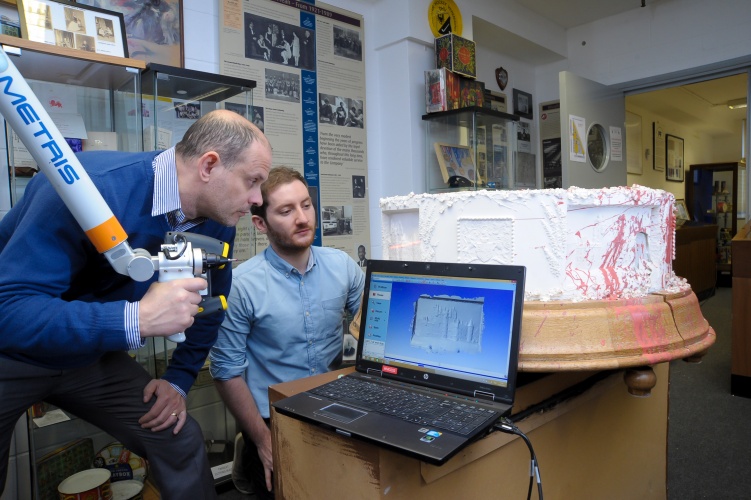
The six-tier, six-foot tall confectionary was originally designed by Peek Frean in 1947. A replica of the cake was displayed in the Peek Frean & Co factory until its closure in 1989, then later housed in a South-East London museum. But vandals almost completely destroyed the model in 2015, leaving Warwick and a team of sugar craftsmen to step in and recreate the 600lb cake.
Professor Mark Williams at the University’s Warwick Manufacturing Group (WMG), alongside the British Sugarcraft Guild (BSG), used 3D imaging to recreate a full-sized replica. The technology was able to accurately scan the cake to within 0.1mm and reproduce a high-resolution 3D model that was then used to digitally repair the cake.
“It was fantastic to apply our technology to such an exciting project and help restore such an iconic cake to its former glory, especially in the year of the Queen’s Golden Anniversary,” said Williams.
"Usually we are working on engineering-related challenges, so to be able to take our expertise and transfer that to something totally different and so historically significant was a really interesting opportunity.”
Different tiers of the cake were then distributed to various BSG regions around the UK, along with the materials, templates and plans for each tier. A small team from the BSG will do the final assembly of the cake at the Peek Frean Museum in the summer.
“The experience of working with WMG at the University of Warwick in creating the 3D models to enable the moulded elements of the cake to be reproduced has been very rewarding,” said Judith Lynn, BSG national vice chairman.
“It illustrates perfectly how modern technology and traditional crafts can work in harmony to recreate such an important historic piece of sugar art.”





Labour pledge to tackle four key barriers in UK energy transition
I'm all for clarity and would welcome anyone who can enlighten me about what Labour's plans are for the size and scale of this Great British Energy....